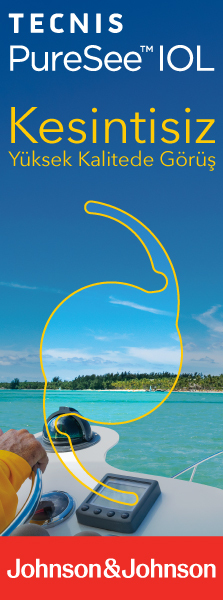Materials and Methods: Thirty-nine cases with elevated IOP despite maximum glaucoma treatment were included in this retrospective study. Grup I that included 21 cases with primary open angle glaucoma and cataract (12 male, 9 female) had simultaneous phacoemulsification with superior temporal clear corneal incision, intraocular lens implantation and trabeculectomy from superior quadrant. Grup II that included 18 cases with primary open angle glaucoma (11 male, 7 female) underwent only trabeculectomy operation. Main outcome measures were VA and IOP in both groups
Results: The mean (±SD) age in Group I was 62±6 years (48-73) and in Group II was 57±6 years (43-68) (P<0.001). The mean (±SD) follow-up time was 22±7 months (11-37) in Group I, and 26±8 months (6-41) in Group II. Preoperative IOP was found to be decreased from 28.2±3.0 mmHg (mean±SD) to 16.1±3.0 mmHg in Group I (P<0.001). In Group II mean baseline IOP (26.4±4.1 mmHg) was found to decrease significantly at the last visit (17.1±2.6 mmHg) (P<0.001). There was a significant reduction in IOP in each group (P<0.001). Preoperative mean (±SD) VA was 1.2±0.1 (LogMAR) (~ 0.063 Decimal fraction) in Group I and 0.7±0.5 (~ 0.2) in Group II. Postoperative final mean VA was 0.7±0.1 (~ 0.2) in Group I and 0.8±0.5 (~ 0.16) in Group II. Taking into account of pre- and postoperative VA, there was a significant increase in Group I (P<0.001) but a decrease in Group II (P<0.05). Preoperative mean (±SD) number of used glaucoma medication was 2.9±0.3 in Group I and 2.7±0.4 in Group II. There was a reduction in number of used glaucoma medication in both groups (P<0.001). Postoperatively, 4 patients (average 1.2 box) in Group I, 3 patients (average 1.3 box) in Group II needed glaucoma treatment Number of used drugs between two groups did not differ pre- and postoperatively (P>0.05). No difference was encountered between two groups regarding the complications (P>0.05).
Conclusion: In the long term, IOP decreased in both, phacotrabeculectomy and trabeculectomy groups, whereas VA increased in phacotrabeculectomy group but decreased in trabeculectomy group.
Keywords : Phacoemulsification, phacotrabeculectomy, intraocular pressure, trabeculectomy




